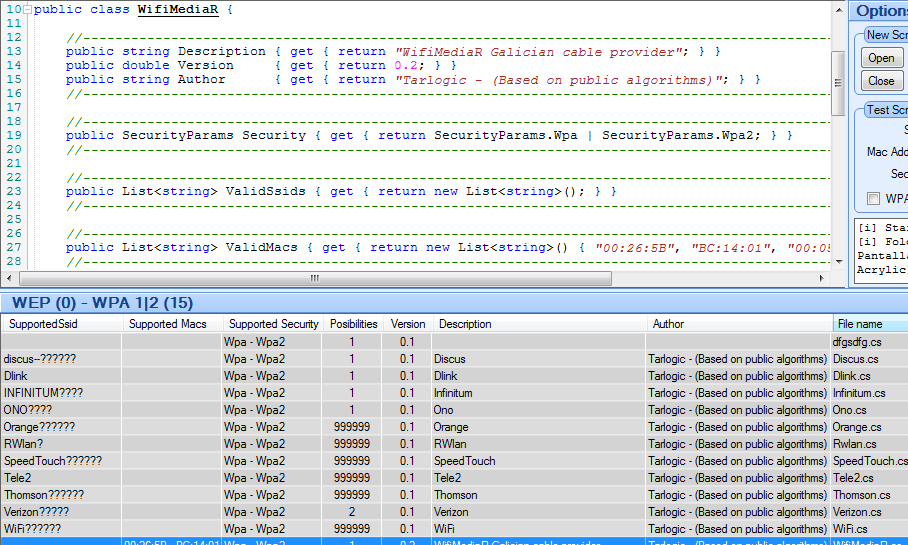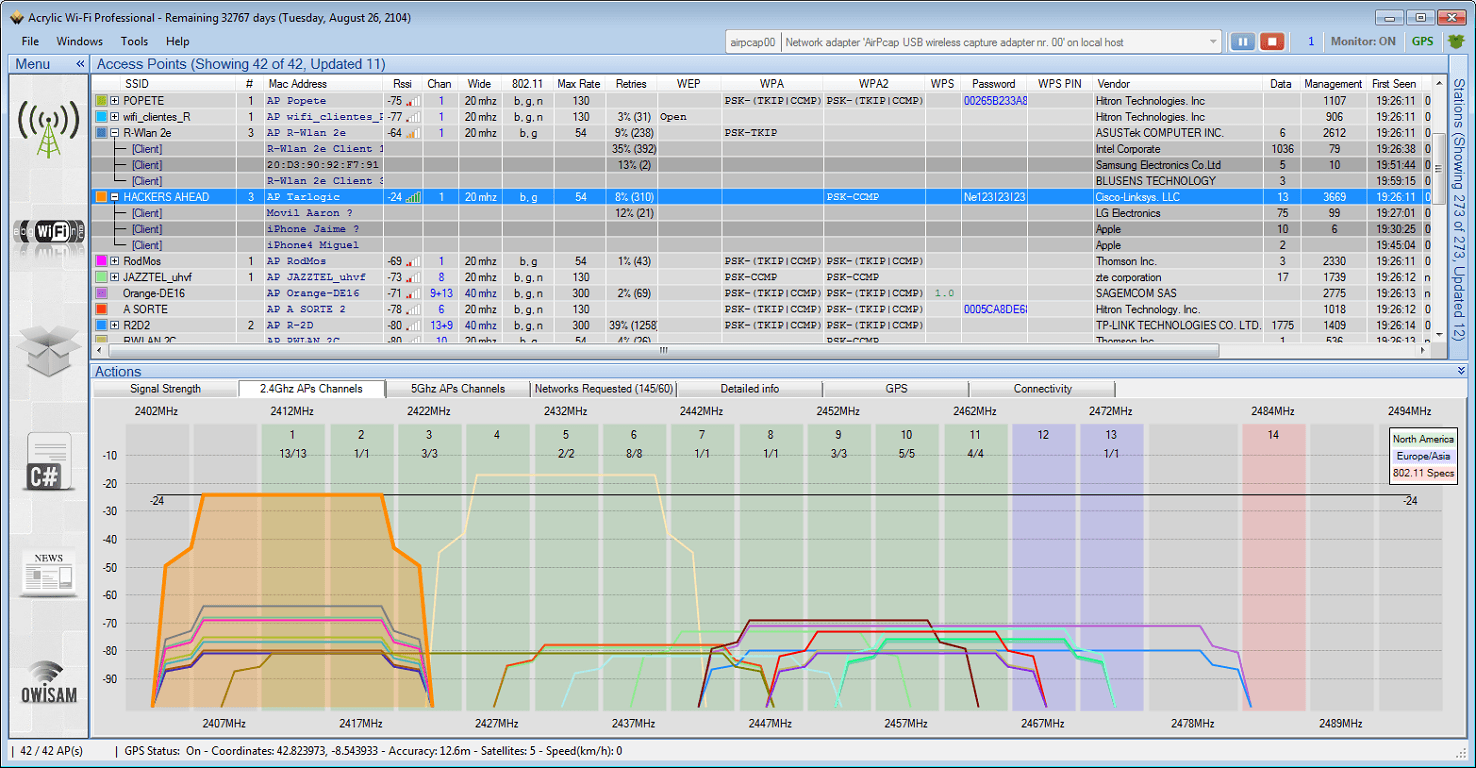Air Shark Wifi Map
WireShark is freely-available software that interfaces with an 802.11 client card and passively captures (sniffs) 802.11 packets being transmitted within a wireless LAN. You may be familiar with using Ethereal software for sniffing wireless networks. Over a year ago, however, Ethereal's lead developer (Gerald Combs) re-released the software as WireShark. WireShark provides the same (if not better) functionality as Ethereal. Ethereal doesnt appear to be supported anymore, so use WireShark instead.
Installing WireShark WireShark software is easy to install. Simply go to, download the software for your applicable operating system, and perform the installation. A problem youll likely run into is that WireShark may not display any packets after starting a capture using your existing 802.11 client card, especially if running in Windows. The issue is that many of the 802.11 cards dont support promiscuous mode.
In this case, you can try turning promiscuous mode off (from inside WireShark), but youll only see (at best) packets being sent to and from the computer running WireShark. If you have trouble getting WireShark working with existing client cards, then consider purchasing, which is a USB-based 802.11 radio designed to work effectively with WireShark. It comes with drivers tuned to WireShark and operates very well. An external antenna is also included with AirPcap, which increases the listening ability of the tool. Capturing packets Before capturing packets, configure WireShark to interface with an 802.11 client device; otherwise, youll get an alert No capture interface selected! when starting a packet capture.

Start / Acrylic Wi-Fi Professional / How to capture WiFi traffic using Wireshark. Wifi heat map WiFi map WiFi measurements. Wire shark or if i go. Look at most relevant Download air shark wifi websites out of 2.26 Million at KeyOptimize.com. Download air shark wifi found at lucidprogram.weebly.com. When you set up Air. Use a different password or no password at all. What You Can Do with CommView for WiFi. Scan the air for WiFi stations and.
To select an interface, click the Capture menu, choose Options, and select the appropriate interface. Be certain to monitor the correct RF channel. For example, if the wireless network is set to channel 1 for the traffic youre interested in, then configure WireShark to monitor channel 1.
To do this, click the Capture menu, choose Options, and click Wireless Settings. The menu Advanced Wireless Settings will appear where you can change the channel. Consider filtering the packet capture to reduce clutter when analyzing packet traces. For example, you may be troubleshooting a particular client device connecting to the network. In this case, you can set a filter that excludes all packets except those associated with the IP address of the client youre troubleshooting.
Wifi Map Apk
To set a filter, click the Capture menu, choose Options, and click WireShark: Capture Filter will appear where you can set various filters. To start the packet capturing process, click the Capture menu and choose Start. WireShark will continue capturing and displaying packets until the capture buffer fills up. The buffer is 1 MB by default. This size is generally good enough, but to change it, click the Capture menu, choose Options, and adjust the Buffer size value accordingly. When youre done capturing packets, click the Capture menu and choose Stop.
Alternatively, you can set the capture run length (in packets or minutes), and the capture will automatically stop when that length has been met. Youll be prompted to save the capture for later viewing. The packet capture will display the details of each packet as they were transmitted over the wireless LAN. Figure 1 is a screenshot of a sample packet capture window. The top panel of the window identifies each packets source and destination nodes, protocol implemented, and information about each packet.

You can select a specific packet to display more details. The one selected in Figure 1, packet 3, is an 802.11 beacon frame. The middle panel displays information about this packet, and you can choose a specific field of the packet (such as Duration field shown in the figure), and the contents of that field are displayed in hex and ASCII format in the bottom panel. As a result, youre able to analyze the flow and view each field (including data field payloads) of all packets. Analysis tips When troubleshooting a wireless LAN, use WireShark to capture the packets, and analyze the flow of packets to see if you can spot the problem.
A wireless 802.1X client device on the wireless network, for example, may appear connected to the wireless network, but the user is not able to access network resources. After reviewing the packet trace, you may see (by observing the VLAN tagging in the appropriate packets), that the client device is connected to the guest network instead of the coroporate network. This would point to a problem with the clients 802.1X supplicant. Wireless packet analysis requires a solid understanding of the 802.11 standard and other protocols.
Also, some vendors add proprietary functions that may cause confusion when reviewing the flow of packets. Even though this may make life difficult when troubleshooting, concentrate on studying the packet traces captured by WireShark to learn the details of how wireless networks work. Of course this means that youll probably need to dig into the guts of the (and, which define many of the non-802.11 packets). WireShark offers tools that could help diagnose problems.
After capturing packets, click the Analyze menu and choose Options. A window will appear that may indicate errors, which you can investigate as the possible problem. Similarly, under the Statistics menu, there are several statistical functions that may help pinpoint the problem. For more details on using WireShark, refer to the help function inside WireShark or review the. For definitions of unfamiliar terms, visit the searchable.

Air Shark Wifi
For more tutorials by Jim Geier, read ',' ',' and '.' Provides independent and to companies developing and deploying wireless networks for enterprises and municipalities. He is the author of a on wireless topics.
What is SharkFest? ™, launched in 2008, is a series of annual educational conferences staged in various parts of the globe and focused on sharing knowledge, experience and best practices among the ® developer and user communities. SharkFest attendees hone their skills in the art of packet analysis by attending lecture and lab-based sessions delivered by the most seasoned experts in the industry. Wireshark core code contributors also gather during the conference days to enrich and evolve the tool to maintain its relevance in ensuring the productivity of modern networks. SharkFest Mission SharkFest’s aim is to support ongoing Wireshark development, to educate and inspire current and future generations of computer science and IT professionals responsible for managing, troubleshooting, diagnosing and securing legacy and modern networks, and to encourage widespread use of the free analysis tool.
Per Gerald Combs, Wireshark project Founder “Wireshark is a tool and a community. My job is to support both”. SharkFest GOALS.
To educate current and future generations of network engineers, network architects, application engineers, network consultants, and other IT professionals in best practices for troubleshooting, securing, analyzing, and maintaining productive, efficient networking infrastructures through use of the Wireshark free, open source analysis tool. To share use cases and knowledge among members of the Wireshark user and developer communities in a relaxed, informal milieu.
Wifi Map Password
To remain a self-funded, independent, educational conference hosted by a corporate sponsor.